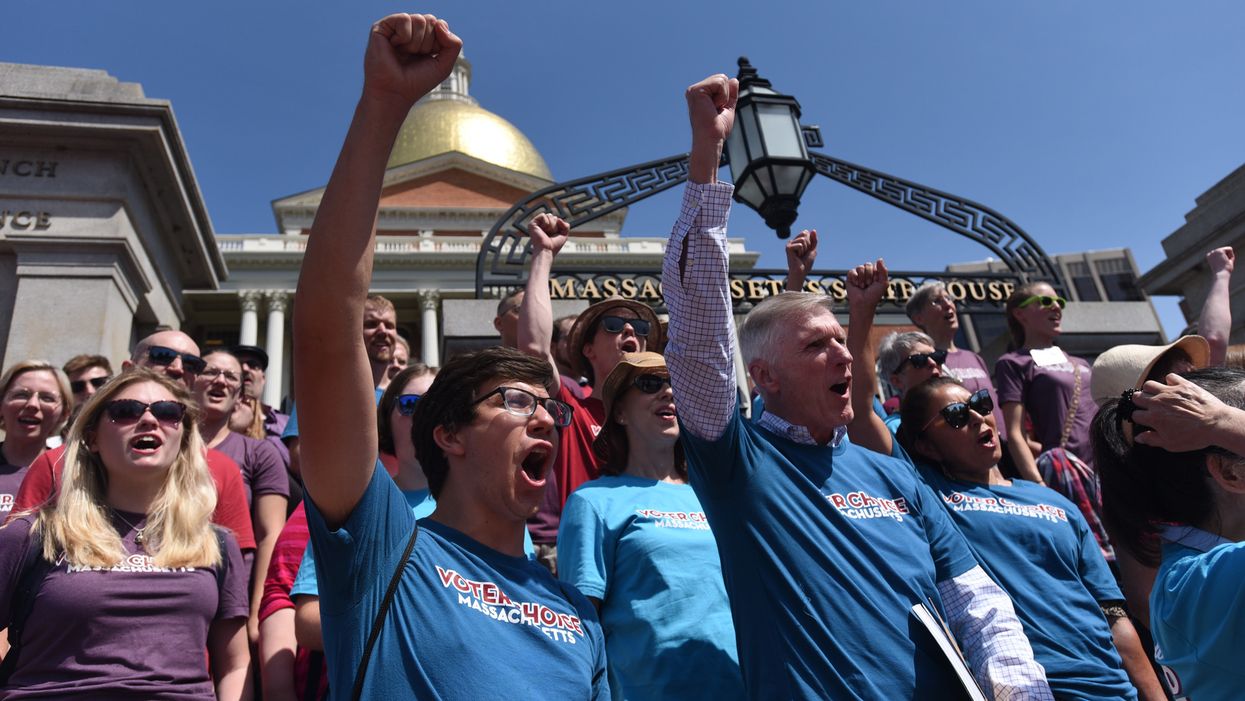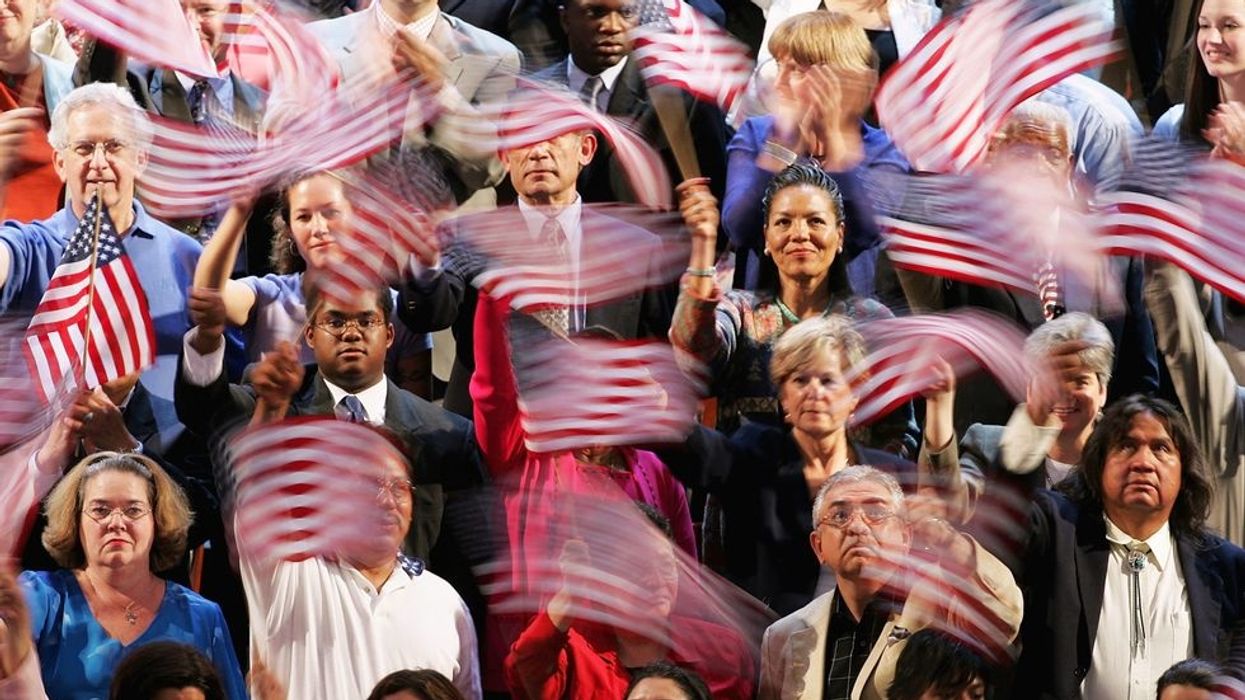Most Americans are accustomed to a winner-take-all voting process, making one, decisive choice between a multitude of candidates.
Ranked-choice voting changes the standard methodology. RCV allows voters to rank multiple candidates in order of personal preference, replacing a "plurality winner" system with a vastly different election process that hasn't been widely seen in the United States for some time.
This past year, ranked-choice voting has been having a sort of coming-out party. It was used in Democratic presidential primaries in four states as well as the Nevada caucuses. And referendums instituting ranked-choice voting are on the ballot this fall in five cities and three states — Alaska, Massachusetts and North Dakota.
RCV advocates got a big boost in June when the prestigious American Academy of Arts and Sciences included it among 31 proposals for improving American democracy. The report hailed ranked-choice voting as a more representative system for choosing candidates while eliminating campaign mudslinging that comes with every election cycle.
(Nevertheless, a judge in Maine approved a ballot measure to invalidate ranked-choice voting at the presidential level in the one place it already has been approved statewide.)
As ranked-choice voting has received more attention, it has also become subject to increased pushback. Some experts contend RCV can hurt voter participation and that it isn't necessarily more representative of voters' choices.
Though briefly implemented in the early 1940s across various states, RCV began a modest comeback in the U.S. more recently. Maine became the first state to pass statewide ranked-choice voting in 2016 and more than a dozen cities across the country, including San Francisco, Minneapolis and Cambridge, Mass,. are also using some form of RCV. New York will begin using it for city elections in 2021.
Under RCV, voters can rank candidates for each office in order of personal preference. If no one candidate earns a majority of first-choice ballots, the candidate with the lowest number of top-choice selections is eliminated and his or her votes are allocated to those voters' second-choice candidate. This process continues until one candidate earns a majority. The system is also known as instant runoff voting.
By allowing voters to rank multiple candidates, advocates for RCV say fewer ballots are wasted. Many voters cast ballots early for candidates that end up dropping out of a race, with those ballots no longer contributing to the outcome of an election.
According to a report by Unite America, a nonpartisan good-government advocacy organization, during this year's presidential primaries approximately 3 million ballots were cast across 14 states for candidates who had already withdrawn from the race. Those ballots were "wasted," according to the report. In California alone, local media reported nearly 400,000 ballots were cast in the Democratic presidential primary for candidates who were no longer in the race. (Unite America provides financial support to The Fulcrum.)
In Democratic presidential contests, candidates need to retain 15 percent of the vote in order to earn delegates, with Republican contests requiring 20 percent, creating the potential for candidates no longer running to earned enough support to remain as contenders in the presidential election under a RCV voting system.
RCV advocates say that counting more ballots in an election is more reflective of an electorate's voice, and in turn more democratic. But under the plurality system, where the candidate who earns the most ballots wins, someone who receives less than 50 percent of the vote can still be declared a winner. For example, during Illinois' March primary, Democrat Marie Newman won the nomination for a U.S. House seat with 47.3 percent of the vote. And in May, Republican Cliff Bentz won a House primary with 31.4 percent. Both are favored to win in the fall.
In a blog post, FairVote, a nonpartisan champion of ranked-choice voting, highlighted Newman's win as an example of the flaws with plurality voting and questioned whether these winners are actually the most preferred candidates by their constituents.
With ranked-choice voting, voters might feel more empowered because they can support their first choice — perhaps not a major-party candidate — and still have the power to back other candidates they like without sacrificing their vote. And, proponents says, candidates would be more inclined to wage a civil campaign in order to earn secondary placement on ballots.
"It really changes the incentives for candidates engaging with voters and voters having that greater ability to make their vote count. It's really quite a dramatic way to do it," said Rob Richie, CEO and president of FairVote.
FairVote conducted an analysis of voter turnout in six local jurisdictions in California, Minnesota and New Mexico that implemented RCV. The data showed an uptick in voter participation after the system was changed.
However, some experts contend that ranked-choice voting isn't the perfect solution to finding a stronger, more representative voting system. James Campbell, professor of political science at the University of Buffalo, published a paper this year analyzing the effects of ranked-choice voting in Maine. He said that in some RCV elections, the winning candidates did not receive a majority of the total votes cast because a significant number of voters did not rank the full field of candidates, a phenomenon known as "ballot exhaustion." Campbell argues this defeats the purpose of RCV's intent to represent a majority of voters.
"Portraying ranked-choice voting as getting so many more people out, and participating and the choice, they may be out to vote for their first or second candidate but after that there's a lot of drop off," said Campbell.
Others argue for yet other alternative systems, like approval voting. Fargo, N.D., is the only jurisdiction currently using this system, which allows voters to support multiple candidates without ranking them. Proponents claim it is less complicated for both voters and those charged with tallying the ballots. St. Louis voters will decide in November whether to implement a version of approval voting.
FairVote's Richie recognizes many of the critiques that come with RCV, but says context is critical when analyzing the outcome of RCV implementation. The competitiveness of a race, the number of candidates running and the overarching political climate can be exclusive to a certain election cycle and can widely influence voter participation.
To consider some of those concerns, New York City conducted an analysis of ranked-choice voting prior to putting it on the November 2019 ballot for voter approval. The city heard testimony from RCV advocacy organizations, including FairVote, that affirmed ranking a large number of candidates "can help ameliorate the issue of ballot exhaustion."
Advocates recommended that the city limit voters to ranking five or six candidates as "ballot exhaustion is especially uncommon when voters can rank a reasonable number of candidates."
On top of potential ballot exhaustion, Campbell argued that in certain circumstances like a general election, the pressure should be on all voters to make a clear choice. In the instance that a voter's first choice doesn't earn enough of a majority and their vote is reassigned to their second choice candidate, Campbell said that change is "not really democratic in a sense."
"I think it's psychologically very different to have somebody make that decision as opposed to having their votes used as though they made that decision," said Campbell.
Richie contends that people should not treat ranked-choice voting as a perfect solution, but merely a better option to the current plurality voting system. By looking at the growing data on RCV comprehensively, Richie feels confident it has the potential to effect positive change across the country.
"I think that when you look at the fuller picture, I feel very confident that ranked-choice voting is doing good things," said Richie.


















